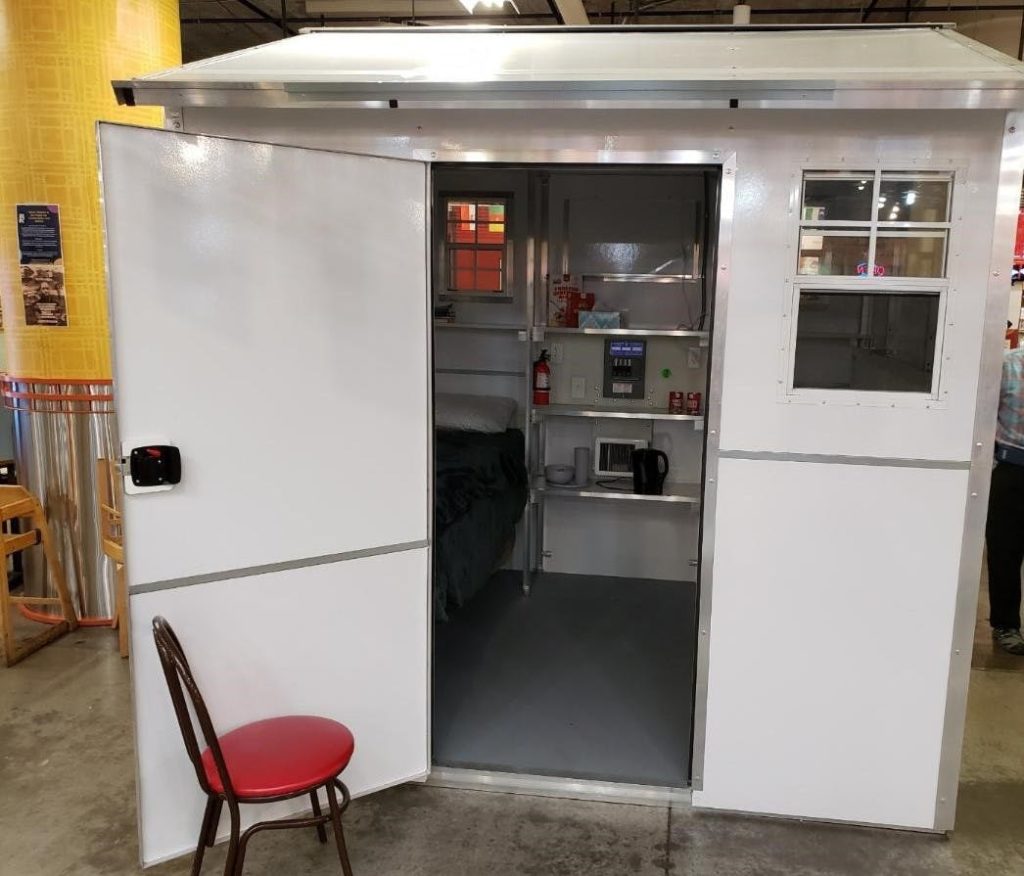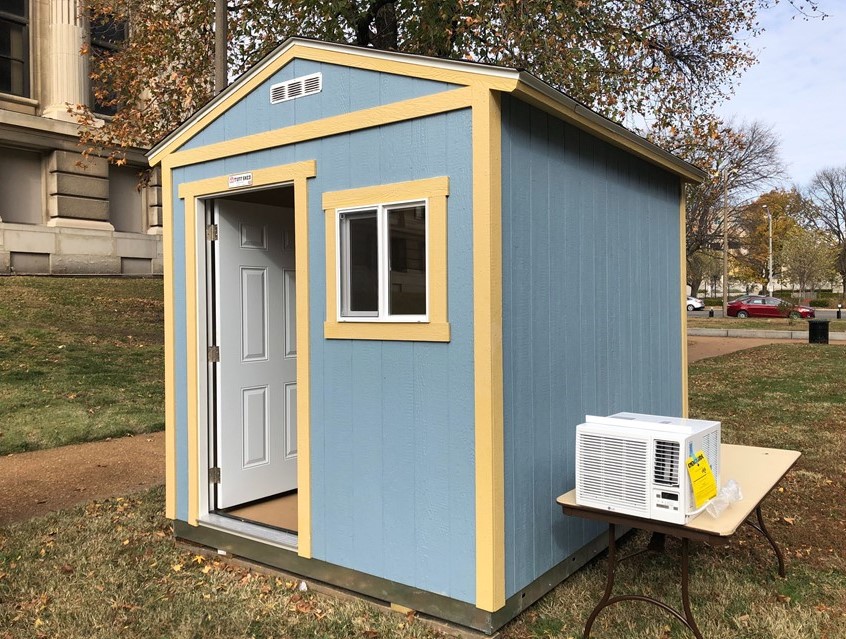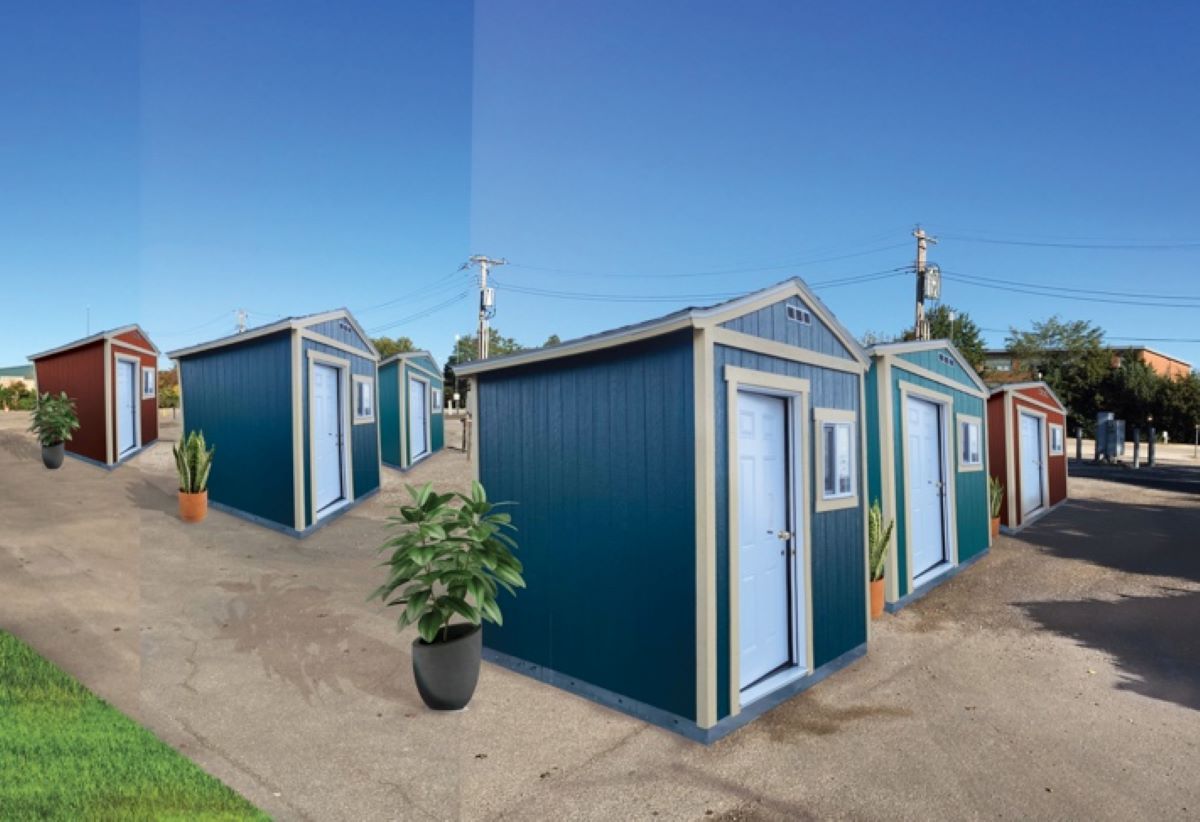Cover image from the Office of St. Louis Mayor Lyda Krewson
For many of us in the United States, late January tends to be that time of year when we find ourselves cooped up inside, wishing for warmer weather, and generally ready to be done with winter now that the holiday season has passed.
Especially during the COVID-19 pandemic and the need to socialize outdoors, these cold winter months can feel like a drag, but they have more serious consequences for the roughly half a million Americans experiencing homelessness on any given night.
To address this issue, some city governments and charitable organizations across the U.S. have turned to tiny houses over the last few years. Now the downsizing novelty often associated with HGTV shows has emerged as a serious and promising solution to help people experiencing homelessness in urban areas.
What You Should Know About Tiny Houses
Characterized as a “small and pioneering movement” as recently as 2014, tiny house villages are rapidly becoming more prevalent in the U.S., especially on the West Coast. About 115 projects are currently operational or planned to open in the future across 48 states – Wyoming and Rhode Island being the exceptions.
A tiny house generally has between 100 and 400 square feet of interior space, while the average home size in the U.S. is about 2,300 ft², and the structures can either be built on wheels or a foundation. The average cost of a tiny housing unit is $21,160, whereas the median price of a newly constructed single-family home last year was $281,700, leading cash-strapped cities and charities to see tiny houses as a cost-effective solution.
The absence of a formal definition allows for a wide variety of structures to fall under the “tiny house” umbrella, so it is important to know that not all tiny house projects are created equal. In the news recently, tiny house projects in Minneapolis and St. Louis demonstrate the growing appeal of tiny houses and some of the variations found in these projects.
Minneapolis – Indoor Village
Minneapolis has a climate known for its long, harsh winters, but a new “indoor village” tiny house project aims to provide relief to those experiencing homelessness in the city. Because of the added difficulties of the pandemic, shelters have been operating at capacity and have been forced to turn people away into sanctioned encampments around the city. To learn more about some of these encampments and the problems associated with them, check out Katherine’s article.
With winter approaching, Minneapolis Mayor Jacob Frey signed an emergency regulation in late October to authorize the construction of 100 tiny houses inside an empty warehouse in the North Loop neighborhood. The project is paid for by $2 million of CARES Act funding and will be operated by Avivo, a non-profit organization that provides services to the homeless including drug and mental health treatment, employment help, and assistance finding permanent housing.

The indoor village is the first tiny house project to be constructed indoors and is one example of how such projects can be adapted to suit a wide range of locations and climates. City officials also opted for tiny houses to allow for more social distancing to improve safety conditions for the project’s residents, hoping to address the uniquely difficult circumstances posed by the COVID pandemic.
St. Louis – Tiny, Tiny Houses
In St. Louis, Mayor Lyda Krewson has championed a slightly different approach to building a tiny house village just north of the city’s downtown. Using only $600,000 in funding, the city has constructed 50 homes with footprints ranging from 80-95 ft² with a central facility for showers and bathrooms. These units show just how tiny these tiny houses can get and are meant to serve as transitional housing for people while they work with caseworkers to find permanent housing.

Like their Minneapolis counterparts, St. Louis officials see the tiny house village as a way to provide shelter from the winter temperatures and prevent the spread of the virus among group-living arrangements like encampments. One concern voiced by homeless advocates over the shutting-down of encampments is that there is not enough room in shelters or other solutions like tiny houses to absorb these displaced people. While the 100- and 50-unit projects in these two cities seem to be promising solutions to help people experiencing homelessness, they are still relatively small scale and require the investment of significant resources to work.
How Small Homes Can Have a Big Impact
For all tiny house projects, such as those mentioned above, the Interagency Council on Homelessness recommends that exploring its viability to address homelessness “should be embedded in a comprehensive community planning process that includes a broad range of stakeholders, including meaningful participation from people experiencing or exiting homelessness.” To guide this process, the USICH poses these questions to policy-makers, organizations, and citizens alike:
- Will the tiny homes you are considering provide a home-like environment and meet housing quality standards?
- Do tiny homes provide a living environment that a potential resident would choose?
- What role will tiny homes play within your systemic efforts to end homelessness?
- Are tiny home developments the best use of financial and land resources?
- How will the tiny homes be appropriately integrated into the community?
While the promise of an affordable, practical, and impactful solution to homelessness remains, it is important that we recognize the potential for tiny houses to have vastly different results depending on the implementation. Simply building tiny houses won’t necessarily solve anything. Instead, policy-makers, charitable organizations, and citizens like you and I need to better understand the best practices that are starting to emerge from projects like those in Minneapolis and St. Louis as well as the limitations. Tiny houses are not a one-size-fits-all solution, but using thoughtful, informed, and participatory processes to guide their implementation could have a huge impact on homelessness in the U.S.

Hey David! I recently saw an article on Tiny Houses in Redondo Beach, which is a small beach town outside of Los Angeles and residents of these homes are able to use the beach-side bathrooms for showers and stuff. Super cool and relevant article!
Fascinating! I am sharing this to all my friends in St. Louis.